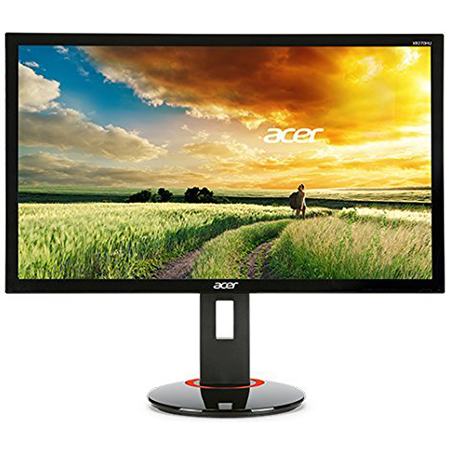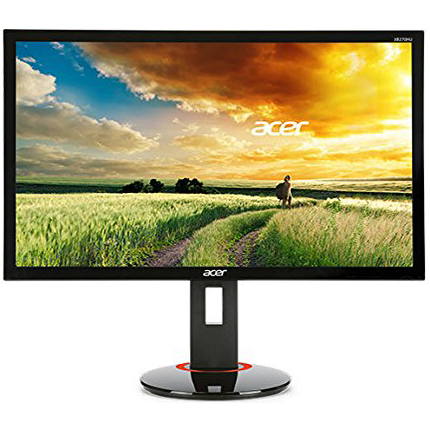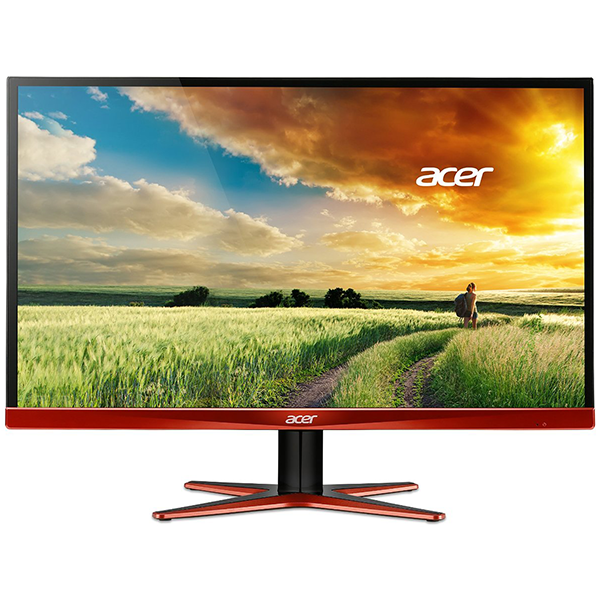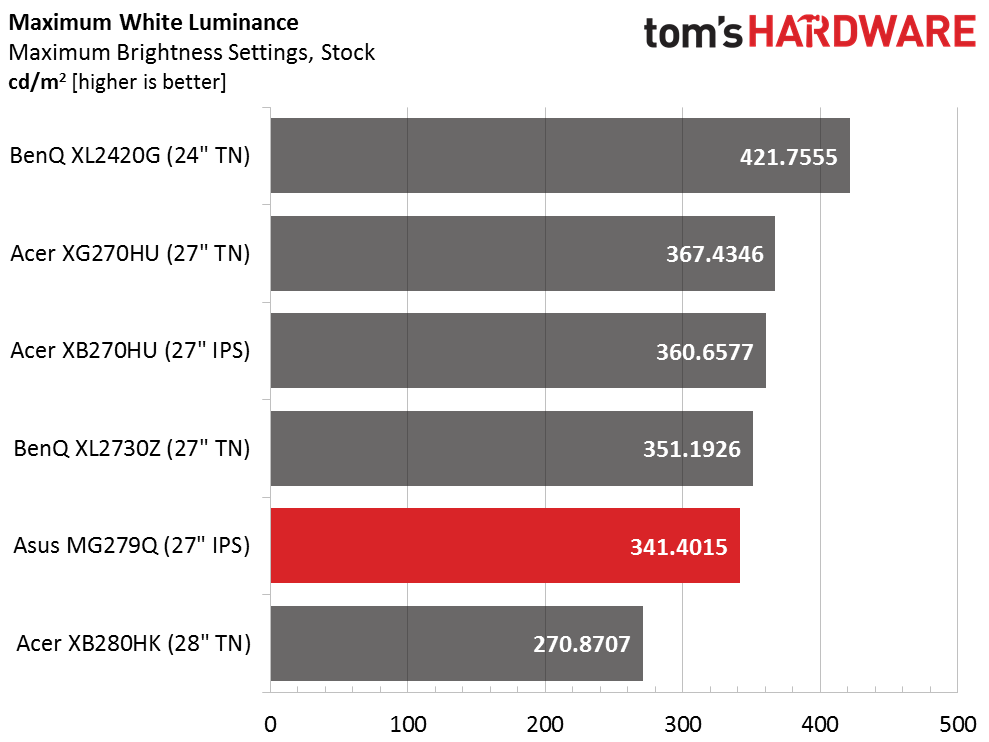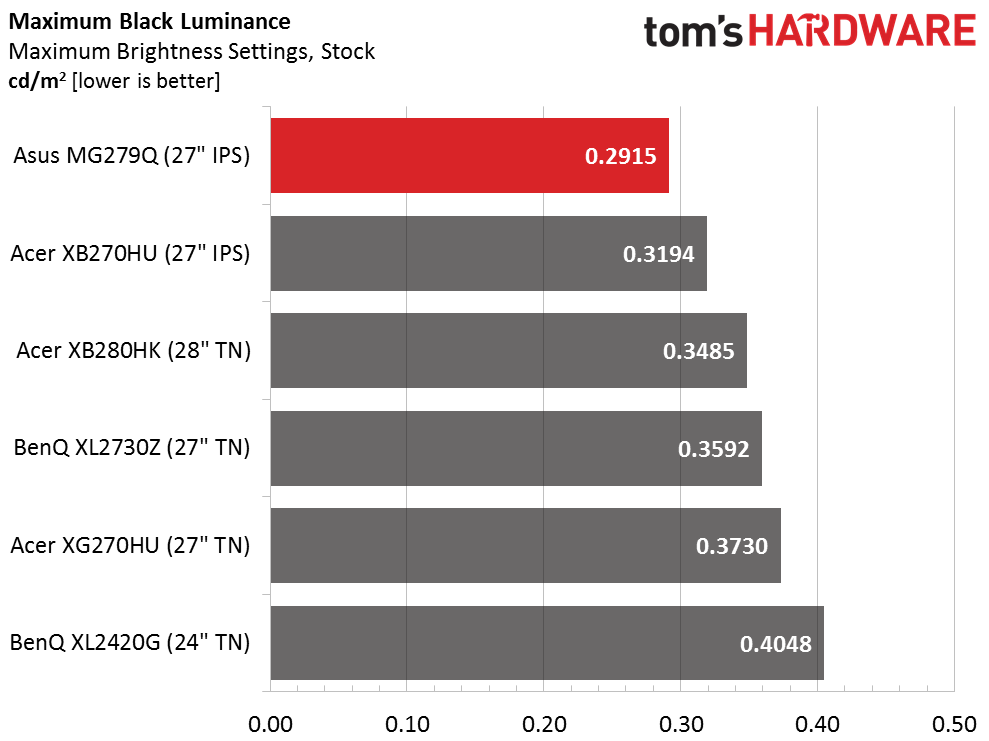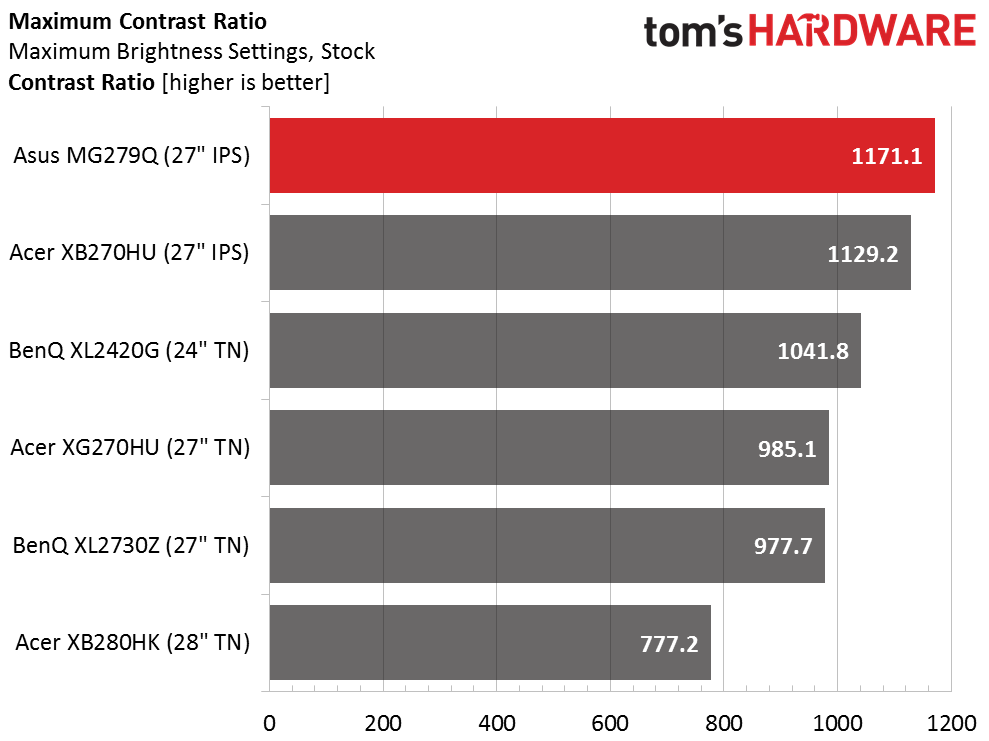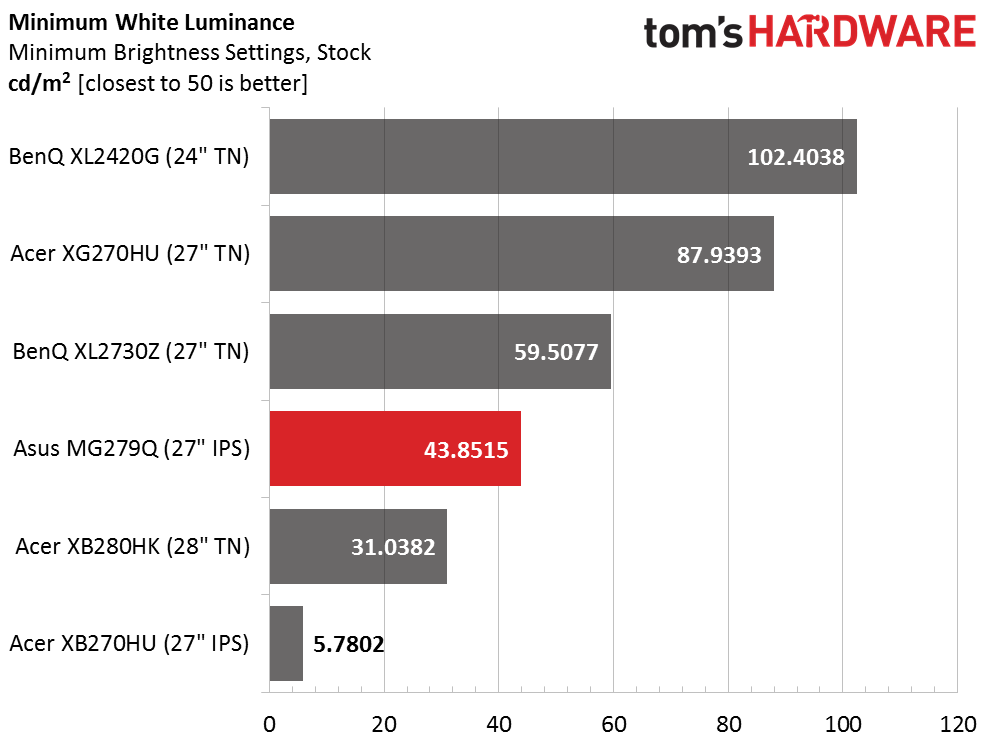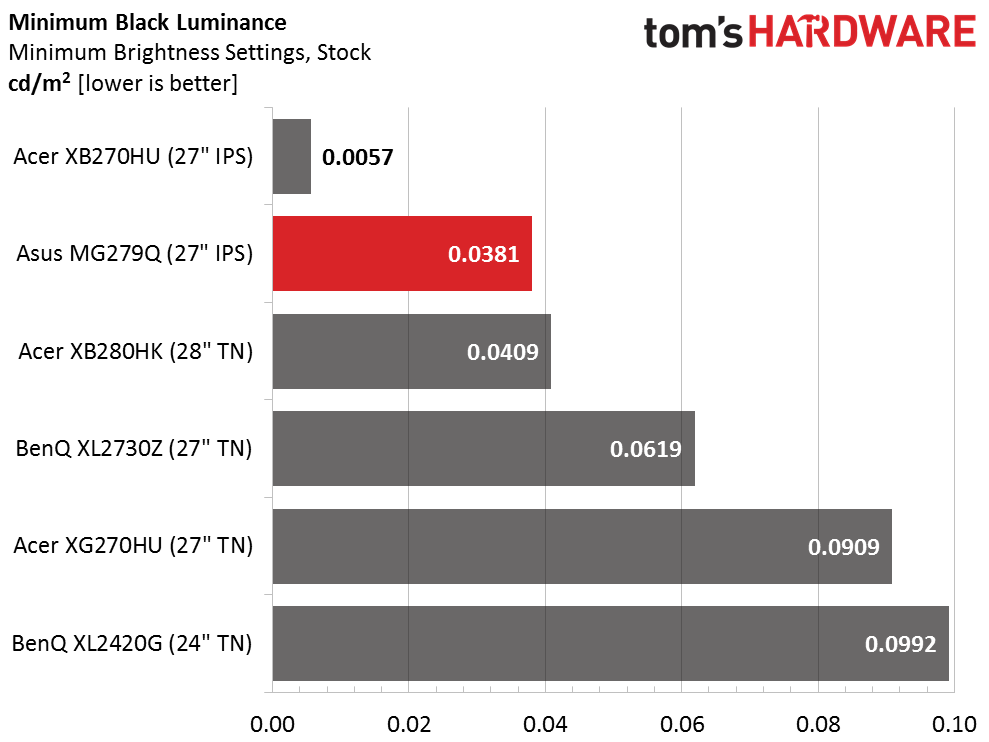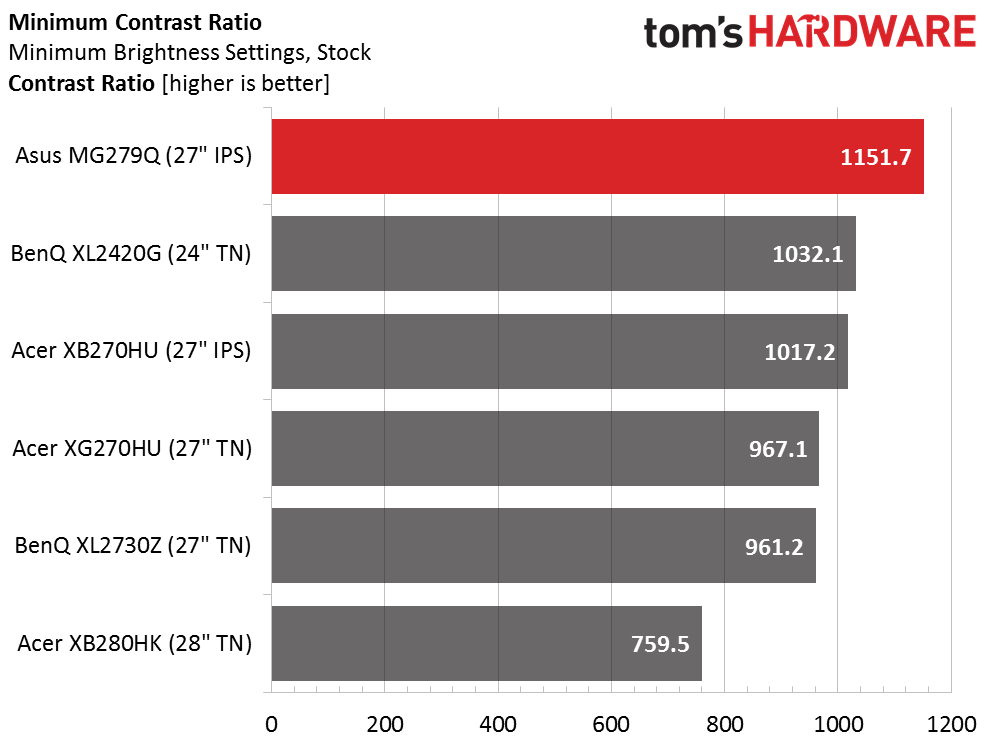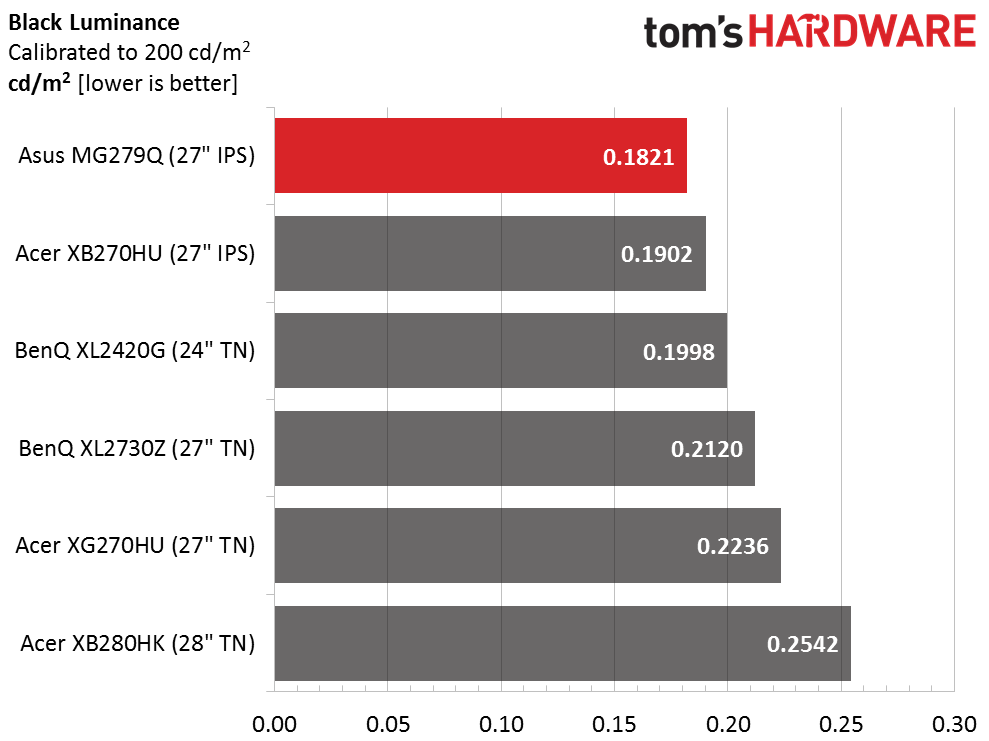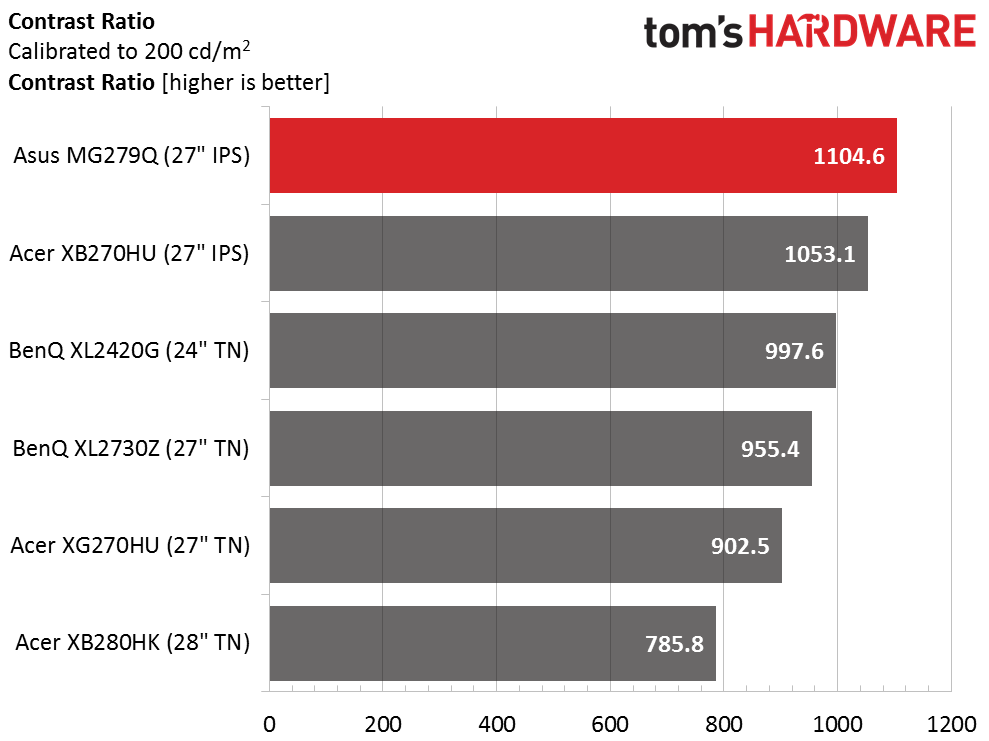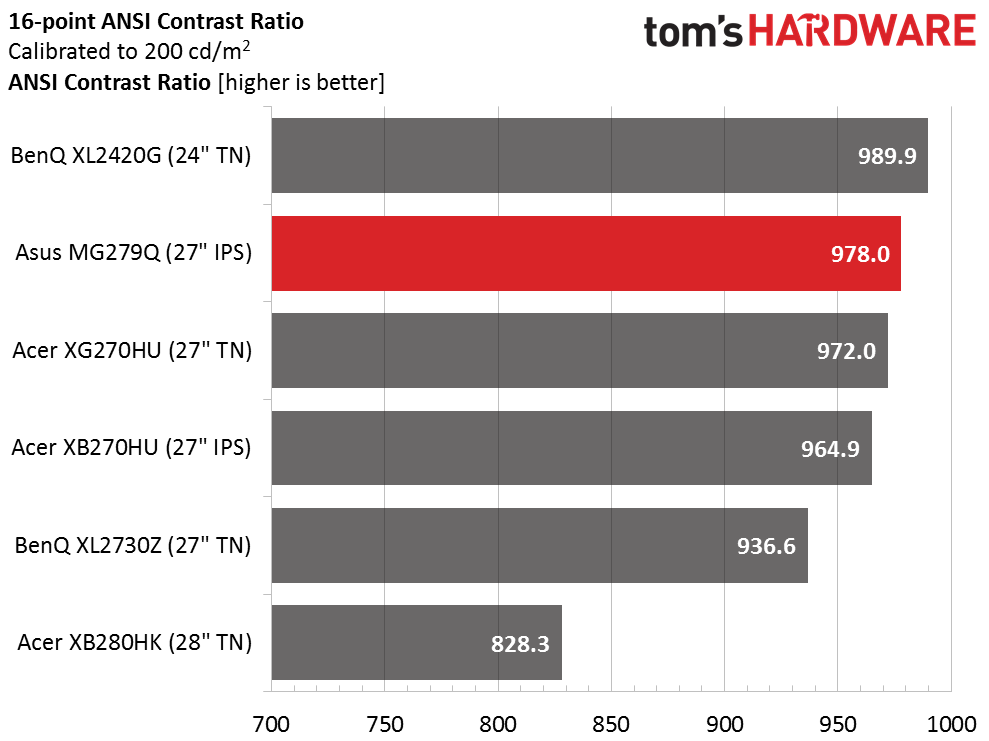Asus MG279Q 27-Inch FreeSync Monitor Review
Today we're reviewing Asus' MG279Q FreeSync gaming monitor, looking at how well it compares to Acer's XB270HU IPS G-Sync monitor?
Why you can trust Tom's Hardware
Brightness And Contrast
To read about our monitor tests in-depth, please check out Display Testing Explained: How We Test Monitors and TVs.Brightness and Contrast testing is covered on page two.
Uncalibrated – Maximum Backlight Level
Today's comparison group covers recently reviewed G-Sync and FreeSync monitors. The only other 144Hz IPS monitor on the list is Acer's XB270HU. Also present are BenQ's XL2730Z and XL2420G plus Acer's XG270HU and XB280HK, the only 60Hz Ultra HD monitor we know of with G-Sync.
The XB270HU uses the same AU Optronics panel as our test subject so we should see close numbers between the two. Right off the bat, the Asus is a tiny bit less bright, although 341.4015cd/m2 is more than enough output for any need we can imagine. There's no ULMB to bring the light level down so this is nowhere near a problem.
The MG279Q edges out the field in black level. We're big fans of AU Optronics' new IPS panel and hope it starts a trend towards similar products from other companies.
Asus MG279Q wins the contrast test over Acer's XB270HU by just a little bit. If this metric is important to you, the only real decision is which flavor of frame-rate-matching you prefer, G-Sync or FreeSync.
Uncalibrated – Minimum Backlight Level
The MG279Q has a useable minimum brightness of 43.8515cd/m2. Why Acer chose to go down so low is a mystery to us. Of all the panels here, the Asus MG279Q and the BenQ XL2730Z come closest to our preferred dark-room setting of 50cd/m2.
Since the XB270HU's backlight goes so low, it will win every black level contest. In reality though, the MG279Q is the winner here since it is actually usable at its minimum brightness setting.
Get Tom's Hardware's best news and in-depth reviews, straight to your inbox.
Asus continues its winning streak in the minimum contrast test. In fact, it's one of the best IPS screens we've measured to date. Only the AMVA panels from BenQ have significantly greater dynamic range.
After Calibration to 200cd/m2
Calibration puts the MG279Q back on top in the black level test. It's turning out to be a superb panel and even though it's the same part as the XB270HU, it fares just a little better here.
Normally calibration reduces contrast when the RGB sliders start at 100 percent. With a measured drop of less than six percent, there is essentially no penalty for dialing in accurate color. Of course the XB270HU isn't far behind and in the end, we'd be equally happy to have either screen in our gaming rig. Their images are for all intents and purposes, identical in quality.
ANSI Contrast Ratio
ANSI contrast is a little more sample-dependent so the results here are skewed a bit. We consider anything over 900:1 to be acceptable. The MG279Q achieves that with ease.
Current page: Brightness And Contrast
Prev Page GamePlus, OSD Setup And Calibration Next Page Grayscale Tracking And Gamma Response
Christian Eberle is a Contributing Editor for Tom's Hardware US. He's a veteran reviewer of A/V equipment, specializing in monitors. Christian began his obsession with tech when he built his first PC in 1991, a 286 running DOS 3.0 at a blazing 12MHz. In 2006, he undertook training from the Imaging Science Foundation in video calibration and testing and thus started a passion for precise imaging that persists to this day. He is also a professional musician with a degree from the New England Conservatory as a classical bassoonist which he used to good effect as a performer with the West Point Army Band from 1987 to 2013. He enjoys watching movies and listening to high-end audio in his custom-built home theater and can be seen riding trails near his home on a race-ready ICE VTX recumbent trike. Christian enjoys the endless summer in Florida where he lives with his wife and Chihuahua and plays with orchestras around the state.
